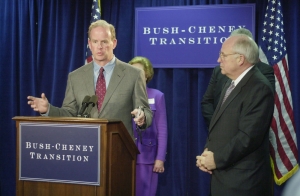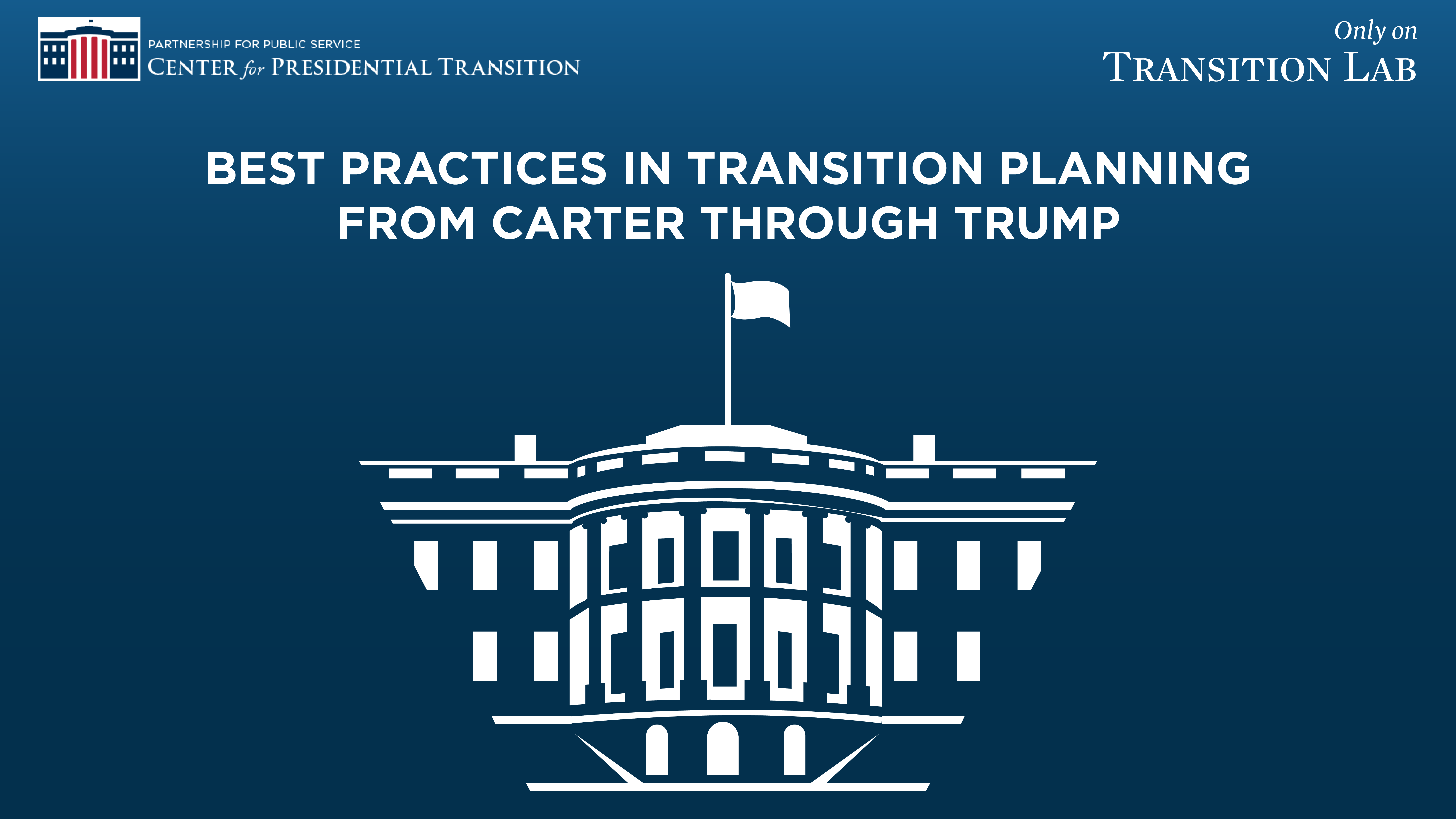Blog
July 06, 2020
The George W. Bush transition to power
George W. Bush had the shortest official transition in history at just 39 days, but secured more political appointees during his first year in office than any other modern president. Clay Johnson,who served as the executive director of Bush’s transition and later as director of the Office of Presidential Personnel, tells host Dave Marchick how Bush brought many of his personnel practices as Texas governor to Washington, how he started his transition early, solicited advice from seasoned Washington veterans and maintained a focus on planning for the new administration even the results of the 2000 election were in dispute.
[tunein id=”t152414704″]Read the highlights:
After the contested results of the Nov. 7, 2000 presidential election, the country had to wait for the Supreme Court decision on December 12 before recognizing Bush as the president-elect. Marchick asked Johnson how the transition team proceeded during this time of uncertainty.
Johnson: “On the day after the election, nobody knew how long it was going to take to resolve. We were just all standing at parade rest. We were shuffling papers, remembering what our goals were and just continuing to work on it privately. Maybe 10 days into it, (transition chairman and Bush’s running mate) Dick Cheney decided, and I’m sure he talked to the president about this, we have to assume we’re going to win this thing. We have to prepare as if we know we’re going to win it.”
Marchick asked Johnson who he turned to for advice on the presidential transition and what advice he was given.
Johnson: “(Former Secretary of State and Treasury) James Baker and (former Secretary of State) George Schultz were just invaluable people and they were so welcoming. The general direction that I got from them was to ensure you have clear definitions of success regarding what you want to try to accomplish and by when. (They said ) don’t go in looking for general things you need to do, but develop the list of things that you want to accomplish by specific dates.”
“We set specific goals…We wanted to be able to communicate that we are working hard to prepare to govern…We set targets for ourselves even before the election was thrown to the court. (Our goal) was to have the senior White House staff chosen by December 15 and the candidates [for Cabinet positions] selected by Christmas time.”
Marchick asked Johnson when George W. Bush began his presidential transition planning for the 2000 election and why he was picked as executive director of the transition.
Johnson: “He (Bush) said…I want you to prepare a plan for what I do when I win the presidency. This was in June of 1999. So it was 16 months or so before the presidential election. I don’t think anybody’s started that early ever before or after.”
“I was a known entity…and I had worked with the senior people in Austin. They knew that I was methodical, organized, systematic…and was focused entirely on the success of my 50-year plus friend. I had a nickname among the (state) senators. My nickname was the icebox or the refrigerator…I was not Mr. hail-fellow-well-met. I was not somebody that was going to be trying to glad hand people and curry favor. I had one client and that was the governor.”
Marchick asked how Johnson’s experience as appointment’s director when Bush was the Texasgovernor helped him prepare for his role in staffing the new administration, particularly by employingthe practice of Bush meeting weekly with the personnel staff to discuss potential nominees rather than going through the White House chief of staff.
Johnson: “It was very important. It’s the way we had done it in Austin…We had a system and he wanted it done exactly like that. And he realized he felt good about the time he spent on that…It was typically 25 to 30 people that he would review every week. And it took about 25 or 30 minutes. There was a real process: `What kind of person would we be looking for to fill this position? What do we want them to do? What kind of person is best prepared to do that? Do we want somebody who’s a manager? Do we want somebody who is a policy person? Did they have the basic human qualities, et cetera, et cetera.’ Then he’d say I agree and then we would move on.”
Marchick noted that Johnson advised Bush in the summer of 2000 to pick his White House chief of staff well ahead of the election, and asked why that was important?
Johnson: “It was key for the person who was going to be making the decisions and working with the president to pick the senior White House staff. If the chief of staff is asked to join the White House team on the day after Election Day, he or she is going to have to take a week or 10 days to put his game face on and you’re going to waste a week or 10 days. (Our goal was to identify) the chief of staff early so that he or she could be prepared to start working, to reach out to people and talk to people about coming in…as soon as the election is decided.”
Marchick noted that historically, sub-Cabinet positions have been a point of contention betweenCabinet secretaries and the White House, and asked how the Bush team handled this issue.
Johnson: “Everybody…advised us (not to) delegate to the Cabinet secretaries (regarding) the picking of all of their sub-Cabinet members…because it has never been successful. We were very clear with every Cabinet secretary that this would be collaborative. We had to both agree…That worked fabulously. I remember when I had my first meeting with (Secretary of State-designate) Colin Powell. I said, ‘Colin, I expect that 92% of the people you bring into the State Department are going to be people that you have worked with before and that will be fine. But there are a lot of people we will identify for you to consider, and maybe there are people you don’t know who should be in certain positions.”

